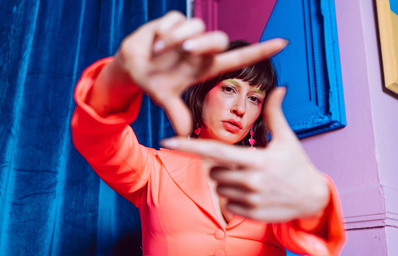From traditional kimonos to modern streetwear, Japan has always been at the forefront of fashion trends. Now, it seems like more and more people are starting to agree. If you go on the internet, it is very possible you will see someone wearing something inspired by J-fashion. But as fashion has evolved, Japan has curated so many different styles. It can be daunting to even begin to breach the tip of the fashion iceberg. However, it is not impossible. So, here is a quick rundown of J-fashion styles.
girly
Girly is a self-explanatory style. While Japan has a lot of feminine styles, this style is all about the cute part of femininity. Specifically, girly is about looking cute, but not childish. Since girly is such a broad style it comes with a lot of substyles. Adult girly is a mature version of girly with fewer pastels and more refined silhouettes. Casual girly has more muted tones and simpler clothes like sweatshirts instead of blouses. Dark girly is more gothic-inspired. French girly is inspired by French fashion. And retro girly is focused more on 40s and 50s silhouettes with neutral tones.
Lolita
Lolita is a cutesy fashion inspired by the Victorian and Rococo eras. Regardless of the name, it is not inspired by the perverted book of the same name written by Nabokov. Instead, it is the offspring of the old Otome fashion, which was traditional girly Western fashion. Lolita is by far the largest umbrella of other styles. There are three main substyles; classic Lolita, which is more muted and subdued; sweet Lolita, which involves lots of cute animal prints and pastel pinks; and gothic Lolita, which is just like normal Lolita but edgier. Besides these three main substyles, there are plenty more variations of the Lolita style.
visual kei
Visual Kei is a style inspired by Japanese rock and metal bands. It’s similar to Western alternative fashion. And like Western alternative fashion, it has a lot of substyles. Angura Kei is gothic rock fashion, casual visual Kei is an edgy shirt and jeans, Eroguro Kei is sexy body horror, and Iryou Kei is an edgy medical style. Kote Kote Kei is 80s visual Kei and very similar to Tradgoth fashion, Kurofuku Kei is elegant black clothing, Nagoya Kei is 90s visual Kei, and Oshare Kei is bright and colorful. Lastly, Tanbi Kei is focused more on European aesthetics.
gyaru
Gyaru, also known as just gal, is one of my personal favorites. It is a rebellious style about going against the traditional beauty standards of Japan. Gyaru takes a lot of inspiration from American styles, specifically from the 90s when the style was created. You can always find a Gyaru by their droopy eye makeup, bleached hair, or tan skin. Gyaru has a lot of different substyles, rivaling even Lolita. No style is more Gyaru than the others, but all vary in intensity.
decora
Decora is a prominent style in J-fashion. You would know a decora when you see one for their bright flashy colors and large collection of accessories adorning them. Though decora doesn’t have as many substyles as some other J-fashions, they make up for it with the sheer intensity of the style. The substyles of decora include casual decora, in which there are fewer accessories; dark decora, which is edgier; decora lolita, which is a blend of the two styles; and pink decora, which is self-explanatorily pink.
other
Japanese styles are so diverse and numerous, but to keep this overview short here is a quick rundown of some other, not as large, styles. Mori girl is a natural and nature-inspired style. Cyber is a retro-futuristic style inspired by sci-fi. Yume kawaii is a cutesy style that adds “non-cute” items for a jarring effect. Yami kawaii is derived from Yume kawaii and involves sickness motifs. Jirai Kei involves dressing like a girl who looks like she’s on the brink of a breakdown. Ametora is fashion inspired by American fashion. Sukeban is inspired by delinquent fashions. Rockabilly is inspired by 50s fashion of the same name. Pop Kei is 80s inspired. Fairy Kei is like Pop Kei but more pastel and cutesy. Natural Kei is woodsy and minimal. Peeps is 90s sporty goth. Bosozoku is a biker gang style. Mote Kei is focused on looking appealing to the opposite sex. Mode fashion is trendy high fashion. Mannish style is focused on dressing in a tomboy style. And of course, some Japanese people still dress in the traditional Kimono.
This may not be all of the J-fashion trends, but is a great jumping-off point for you to begin researching J-fashion yourself. I hope this is a good starter guide for your journey into Japanese fashion.


